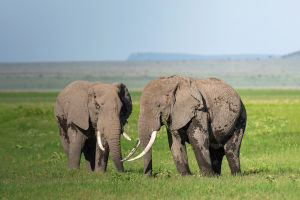When we think of speed in the animal kingdom, one name immediately comes to mind: the cheetah. Known for its breathtaking speed and agility, the cheetah is nature’s sprint champion, capable of reaching jaw-dropping speeds that leave all other land animals in the dust.
But there's much more to this incredible predator than its record-breaking sprints. Let’s dive into the fascinating world of the cheetah, a creature built for speed and survival.
1. The Anatomy of Speed
The cheetah’s body is perfectly engineered for speed. With a lightweight frame, long legs, and a flexible spine, every aspect of its anatomy is designed for one purpose: outrunning its prey.
Why the Cheetah is So Fast:
Flexible Spine: The cheetah’s spine acts like a spring, allowing its body to extend fully and cover more ground with each stride.
Non-Retractable Claws: Unlike other big cats, a cheetah's claws are always out, providing extra grip on the ground, much like cleats on a sprinter's shoes.
Large Nasal Passages: Bigger nasal passages allow for increased oxygen intake, keeping the cheetah fueled during intense sprints.
Tail for Balance: A cheetah’s tail acts as a rudder, helping it make sharp turns while chasing prey.
2. Record-Breaking Speed
The cheetah is the undisputed speed king of the animal kingdom, capable of reaching speeds of 60 to 70 miles per hour (97 to 113 km/h). However, the cheetah can only maintain this speed for short bursts, usually around 20 to 30 seconds, before it has to slow down to catch its breath.
Fun Fact: A cheetah can accelerate from 0 to 60 mph in just a few seconds, faster than most sports cars!
3. Hunting Tactics
The cheetah is a skilled hunter, relying on its speed to catch prey. Unlike other predators that ambush or stalk, the cheetah uses a high-speed chase to run down its target. Once the cheetah gets close, it knocks the prey down with its powerful forelimbs.
Favorite Prey: The cheetah’s diet consists mainly of small to medium-sized ungulates, such as gazelles, impalas, and springboks. Their keen eyesight allows them to spot prey from a distance, and they’ll typically hunt in open grasslands where they can use their speed to their advantage.
4. The Challenge of Being a Cheetah
Despite its speed, the cheetah faces many challenges in the wild. One of its greatest vulnerabilities is that it lacks the strength and size of other predators, such as lions and hyenas. This means that cheetahs often lose their kills to larger animals, forcing them to hunt again to feed themselves and their cubs.
Did You Know? Cheetahs also have a higher chance of injury due to the extreme physical exertion involved in their high-speed chases. After a sprint, a cheetah needs to rest and recover, leaving it temporarily vulnerable to scavengers and other threats.
5. Cheetahs in Peril
Sadly, cheetah populations are under significant threat due to habitat loss, human-wildlife conflict, and poaching. With fewer than 7,000 cheetahs left in the wild, conservation efforts are crucial to ensuring the survival of this incredible species.
How You Can Help: Supporting conservation programs and raising awareness about the plight of cheetahs can help protect these magnificent animals. Organizations like the Cheetah Conservation Fund are dedicated to ensuring their survival through habitat preservation, education, and anti-poaching initiatives.
6. Cheetahs in Culture
Throughout history, cheetahs have been admired for their speed, grace, and beauty. Ancient Egyptians kept cheetahs as symbols of royalty, while in modern culture, the cheetah is often used as a symbol of speed and athletic prowess. Whether in art, literature, or even sports branding, the cheetah remains an icon of agility and power.
The cheetah is the ultimate sprint champion, combining breathtaking speed with remarkable agility. However, its delicate position in the wild serves as a reminder of the need to protect and preserve the natural world. Lykkers, as we continue to admire the cheetah for its unparalleled speed and grace, it’s crucial that we work to ensure its survival for future generations to witness the true king of speed in action.


